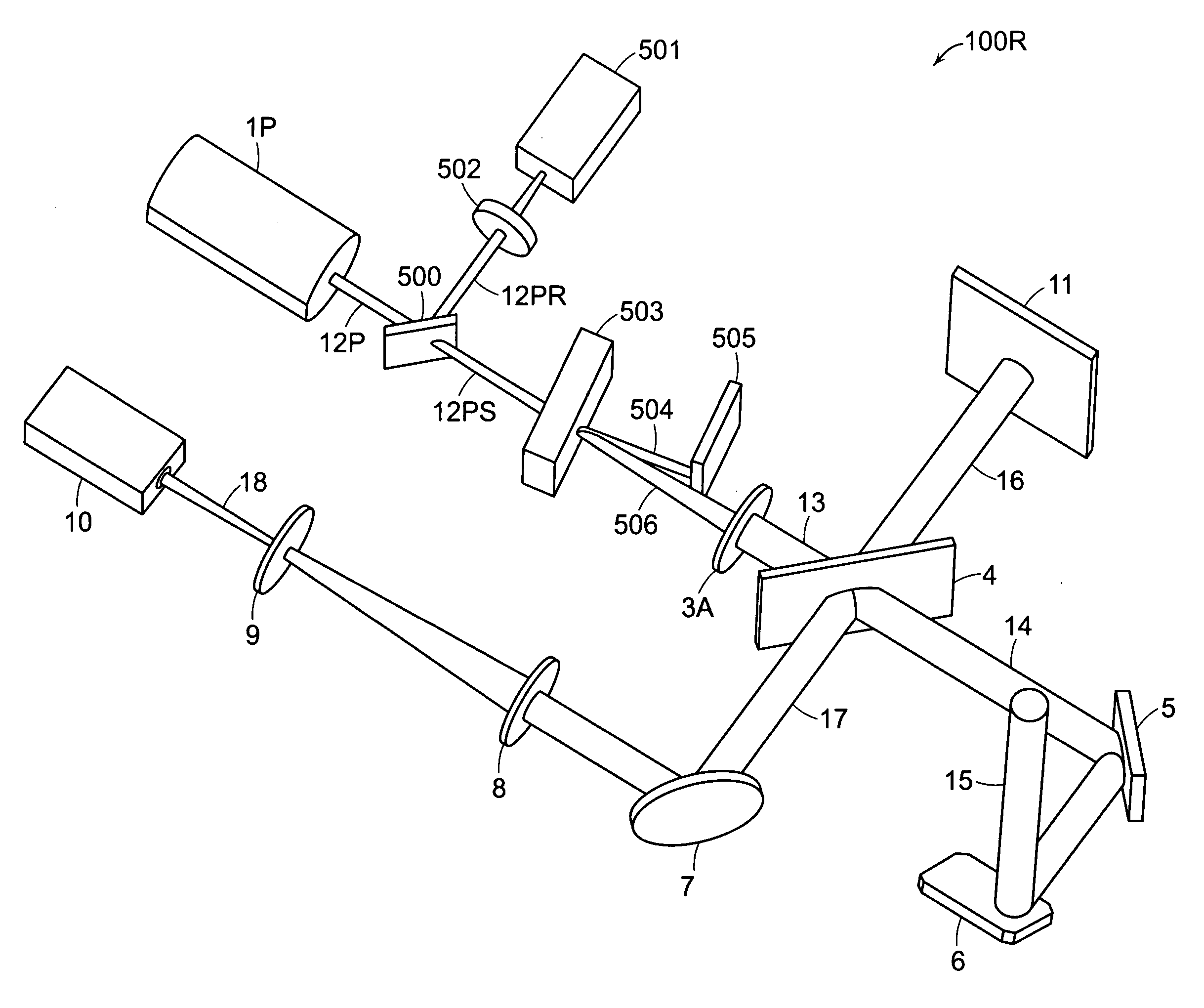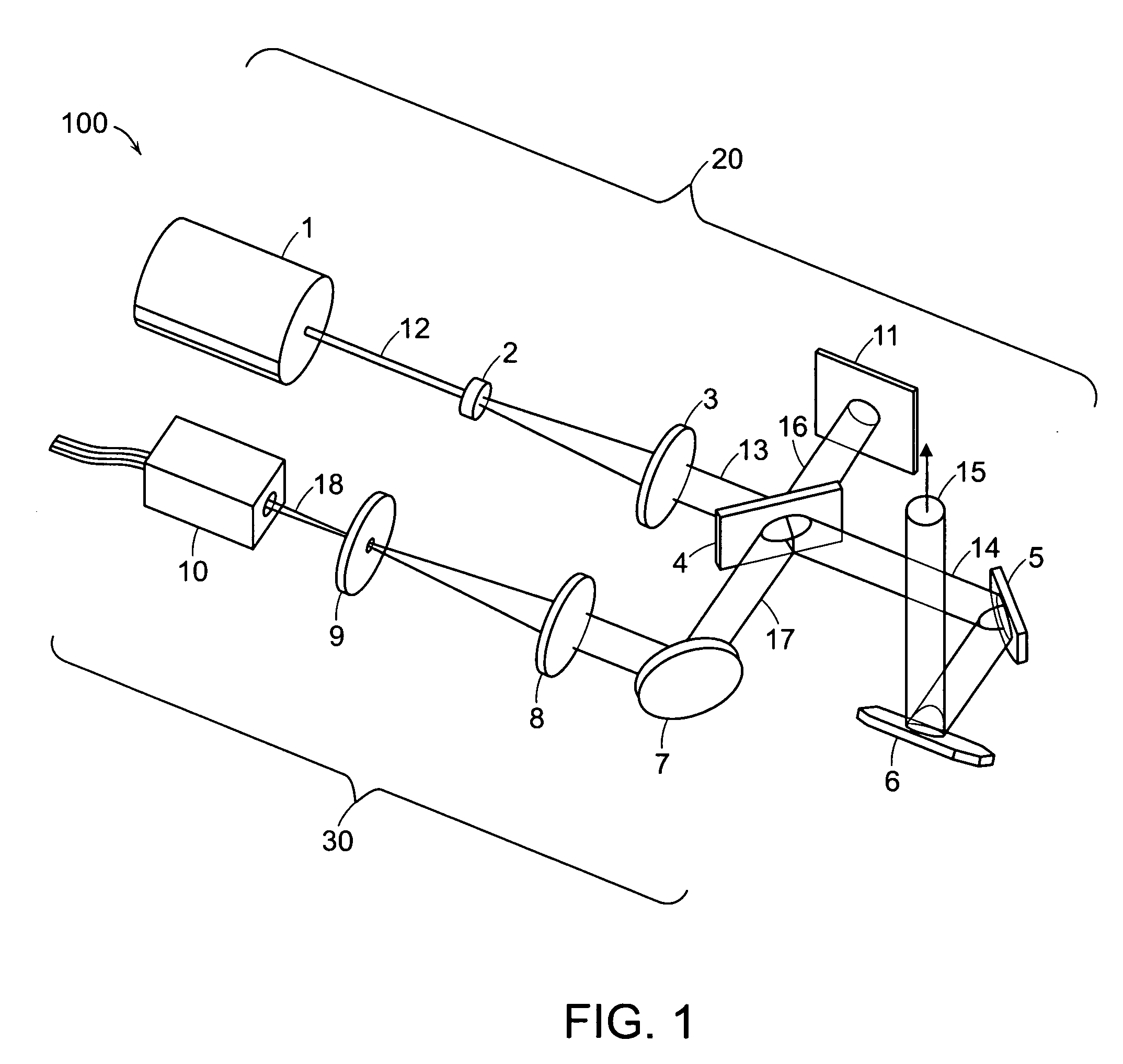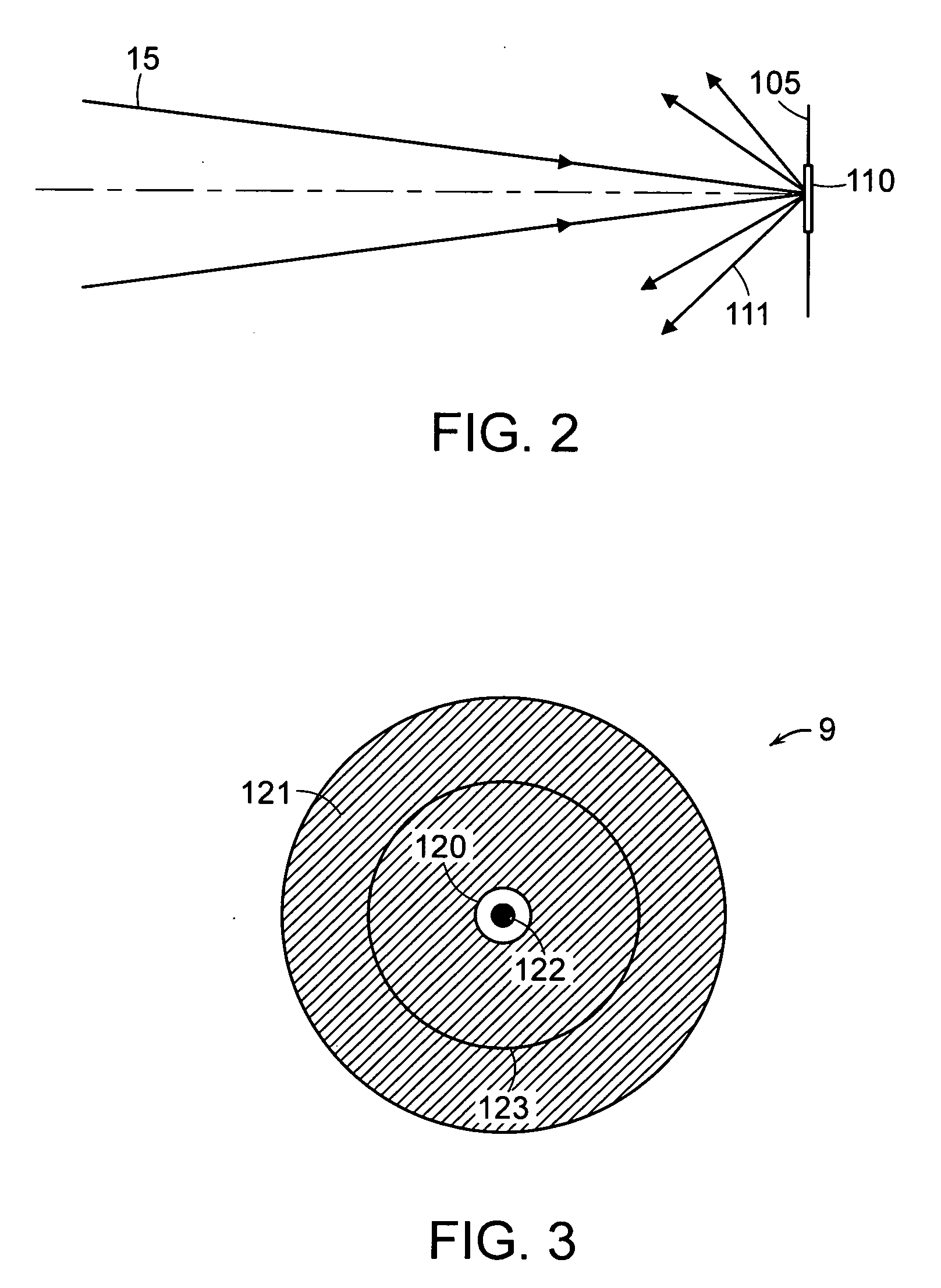Laser radar projection with object feature detection and ranging
a technology of object feature detection and laser radar, applied in the field of laser projection systems, can solve the problems of time and labor, degrade precision and reliability, and prior attempts to solve this problem have not provided a solution
- Summary
- Abstract
- Description
- Claims
- Application Information
AI Technical Summary
Benefits of technology
Problems solved by technology
Method used
Image
Examples
Embodiment Construction
Targetless Object Feature Detection
[0060]FIGS. 1-15 relate to a targetless laser projector (“TLP”) 20 as shown and described in Applicants' parent application referenced above. The laser radar projector (“LRP”) 100R of the present improvement invention is described below with reference to FIGS. 16-18. The TLP 20 has two major optical subsystems—a projection subsystem 20 and an optical feedback subsystem 30. The projection subsystem 20 includes a laser 1, beam expanding lenses 2 and 3, a beam splitter 4, a beam dump 11, and beam steering mirrors 5 and 6. The beam steering mirrors are mounted on shafts of corresponding galvanometers 203, 204 in FIG. 6, as is well known in the laser projection art. The optical feedback subsystem 30 includes a mirror 7, a focusing lens 8, a spatial filter 9, and a high-sensitivity photo detector 10.
[0061]The laser 1 emits a laser beam 12. The laser 1 is typically a solid state diode pumped laser that produces light at the “green” wavelength of 532 nanom...
PUM
 Login to View More
Login to View More Abstract
Description
Claims
Application Information
 Login to View More
Login to View More - R&D
- Intellectual Property
- Life Sciences
- Materials
- Tech Scout
- Unparalleled Data Quality
- Higher Quality Content
- 60% Fewer Hallucinations
Browse by: Latest US Patents, China's latest patents, Technical Efficacy Thesaurus, Application Domain, Technology Topic, Popular Technical Reports.
© 2025 PatSnap. All rights reserved.Legal|Privacy policy|Modern Slavery Act Transparency Statement|Sitemap|About US| Contact US: help@patsnap.com



